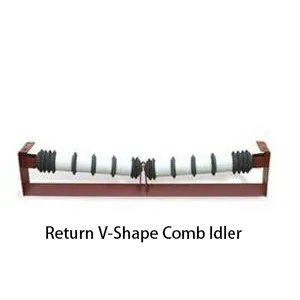 Afrikaans
Afrikaans  Albanian
Albanian  Amharic
Amharic  Arabic
Arabic  Armenian
Armenian  Azerbaijani
Azerbaijani  Basque
Basque  Belarusian
Belarusian  Bengali
Bengali  Bosnian
Bosnian  Bulgarian
Bulgarian  Catalan
Catalan  Cebuano
Cebuano  Corsican
Corsican  Croatian
Croatian  Czech
Czech  Danish
Danish  Dutch
Dutch  English
English  Esperanto
Esperanto  Estonian
Estonian  Finnish
Finnish  French
French  Frisian
Frisian  Galician
Galician  Georgian
Georgian  German
German  Greek
Greek  Gujarati
Gujarati  Haitian Creole
Haitian Creole  hausa
hausa  hawaiian
hawaiian  Hebrew
Hebrew  Hindi
Hindi  Miao
Miao  Hungarian
Hungarian  Icelandic
Icelandic  igbo
igbo  Indonesian
Indonesian  irish
irish  Italian
Italian  Japanese
Japanese  Javanese
Javanese  Kannada
Kannada  kazakh
kazakh  Khmer
Khmer  Rwandese
Rwandese  Korean
Korean  Kurdish
Kurdish  Kyrgyz
Kyrgyz  Lao
Lao  Latin
Latin  Latvian
Latvian  Lithuanian
Lithuanian  Luxembourgish
Luxembourgish  Macedonian
Macedonian  Malgashi
Malgashi  Malay
Malay  Malayalam
Malayalam  Maltese
Maltese  Maori
Maori  Marathi
Marathi  Mongolian
Mongolian  Myanmar
Myanmar  Nepali
Nepali  Norwegian
Norwegian  Norwegian
Norwegian  Occitan
Occitan  Pashto
Pashto  Persian
Persian  Polish
Polish  Portuguese
Portuguese  Punjabi
Punjabi  Romanian
Romanian  Russian
Russian  Samoan
Samoan  Scottish Gaelic
Scottish Gaelic  Serbian
Serbian  Sesotho
Sesotho  Shona
Shona  Sindhi
Sindhi  Sinhala
Sinhala  Slovak
Slovak  Slovenian
Slovenian  Somali
Somali  Spanish
Spanish  Sundanese
Sundanese  Swahili
Swahili  Swedish
Swedish  Tagalog
Tagalog  Tajik
Tajik  Tamil
Tamil  Tatar
Tatar  Telugu
Telugu  Thai
Thai  Turkish
Turkish  Turkmen
Turkmen  Ukrainian
Ukrainian  Urdu
Urdu  Uighur
Uighur  Uzbek
Uzbek  Vietnamese
Vietnamese  Welsh
Welsh  Bantu
Bantu  Yiddish
Yiddish  Yoruba
Yoruba  Zulu
Zulu wing pulley lagging
Understanding Wing Pulley Lagging Enhancements for Efficiency and Longevity
In the vast world of material handling and conveyor systems, equipment efficiency is paramount. One critical component that contributes to the overall performance of conveyor systems is the wing pulley. To enhance its functionality and prolong its operational lifespan, wing pulley lagging emerges as an essential consideration. This article explores the importance of wing pulley lagging, the types available, and the benefits it provides to industrial applications.
What is a Wing Pulley?
A wing pulley is a specialized type of pulley designed with a unique construction that features wings or blades extending outward from its body. This design allows for better material flow and reduced build-up of debris on the pulley, which is particularly useful in conveying bulk materials like gravel, sand, or coal. The key advantage of a wing pulley lies in its ability to minimize drag and slippage while also aiding in the release of trapped material when the conveyor system is in operation.
The Role of Lagging in Industrial Applications
Lagging is the material applied to the surface of a pulley to enhance its performance
. For wing pulleys, lagging serves multiple purposes1. Improved Friction The primary function of lagging is to increase the friction between the belt and the pulley. This enhanced grip prevents slippage, ensuring that the conveyor operates efficiently without losing power or speed.
2. Wear Resistance Material handling operations often involve abrasive materials that can quickly wear down the surface of a pulley. Lagging materials offer increased resistance to wear, thereby extending the life of the wing pulley and reducing maintenance costs.
3. Protection Against Damage Lagging acts as a protective layer for the pulley, safeguarding it against potential damage from heavy loads or rough materials. This protection helps maintain structural integrity, which is critical for ongoing operations.
4. Noise Reduction The installation of lagging can also mitigate noise levels generated during operation. This is particularly important in environments where noise control is a priority.
wing pulley lagging

5. Vibration Dampening Properly lagged pulleys can help absorb vibrations, leading to a smoother operation. This not only enhances the longevity of the pulley itself but also reduces wear and tear on the entire conveyor system.
Types of Lagging Materials
Various lagging materials can be used depending on the specific requirements of the application. Some common types include
- Rubber Lagging A popular choice due to its excellent friction properties and durability. Rubber lagging is versatile and can handle a variety of materials and conditions.
- Ceramic Lagging This type is infused with ceramic tiles, providing exceptional wear resistance and grip. It's particularly suited for heavy-duty applications where wear is a significant concern.
- Polyurethane Lagging Known for its flexibility and lightweight properties, polyurethane lagging can be a great choice for applications that require specific performance characteristics, including the ability to withstand extreme temperatures.
- Metal Lagging For extreme environments where abrasion is a concern, metal lagging can provide the durability needed, although it may not be suitable for all applications due to its weight and potential for increased noise.
Conclusion
Incorporating wing pulley lagging into conveyor systems represents a strategic move toward operational efficiency and equipment longevity. By understanding the critical role of lagging, businesses can make informed decisions regarding their material handling operations. The choice of lagging material should align with the specific demands of the application, considering factors such as wear resistance, friction requirements, and environmental conditions.
Investing in the right wing pulley lagging will not only enhance the performance of the conveyor system but also contribute to lower operational costs and reduced downtime. As industries continue to evolve, the integration of reliable components like wing pulleys and effective lagging solutions will remain vital for ensuring seamless material movement and promoting overall productivity in various sectors.
-
Revolutionizing Conveyor Reliability with Advanced Rubber Lagging PulleysNewsJul.22,2025
-
Powering Precision and Durability with Expert Manufacturers of Conveyor ComponentsNewsJul.22,2025
-
Optimizing Conveyor Systems with Advanced Conveyor AccessoriesNewsJul.22,2025
-
Maximize Conveyor Efficiency with Quality Conveyor Idler PulleysNewsJul.22,2025
-
Future-Proof Your Conveyor System with High-Performance Polyurethane RollerNewsJul.22,2025
-
Driving Efficiency Forward with Quality Idlers and RollersNewsJul.22,2025





























